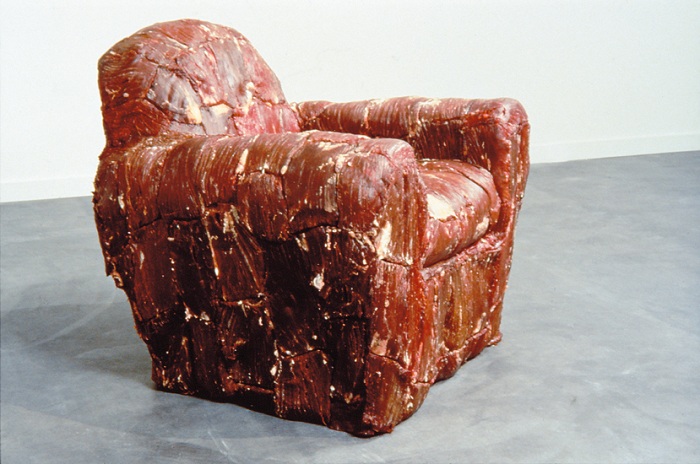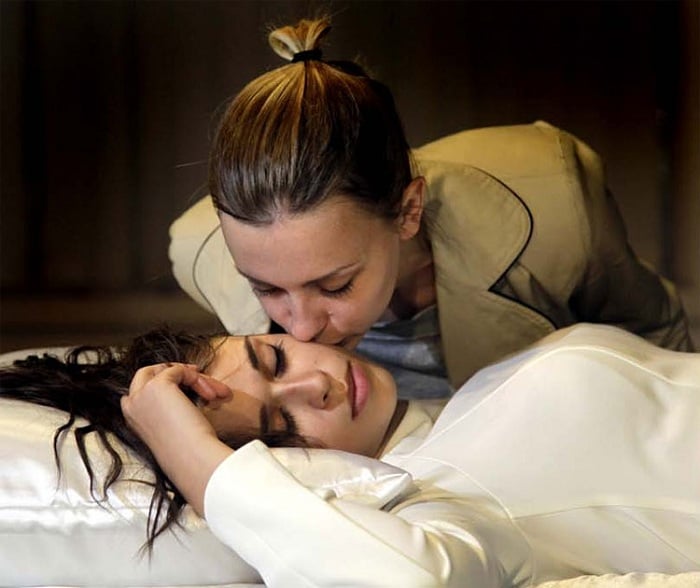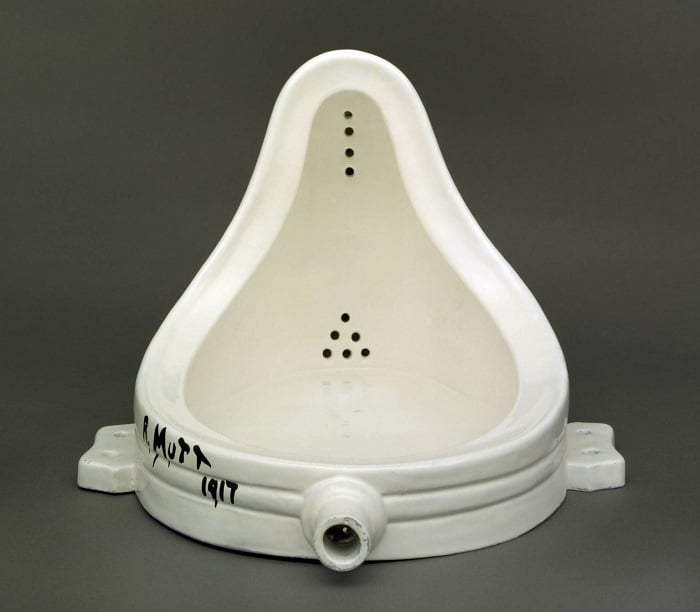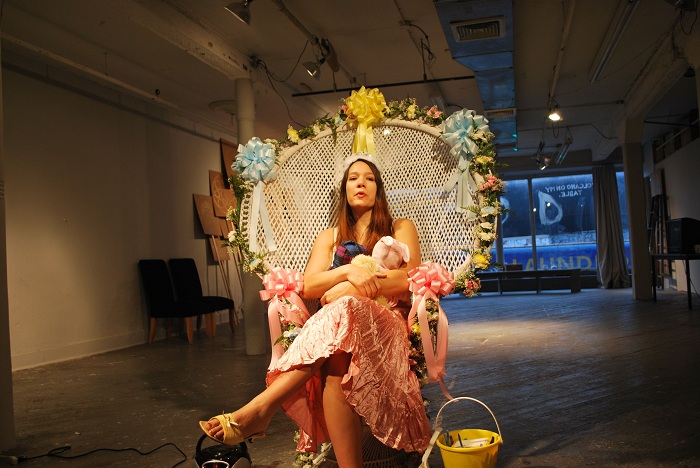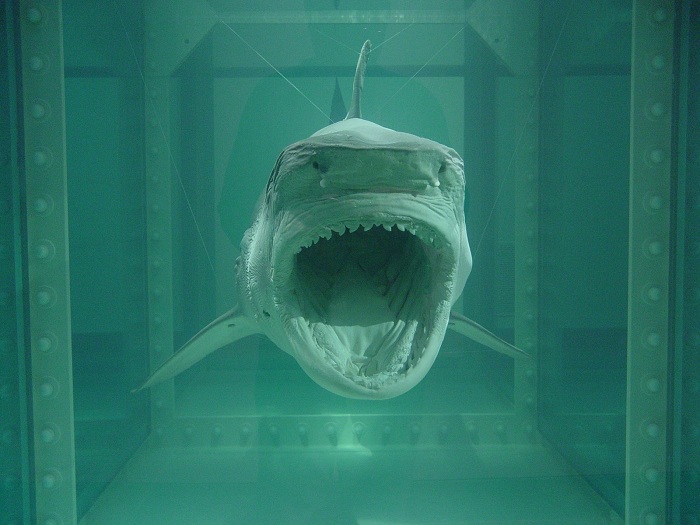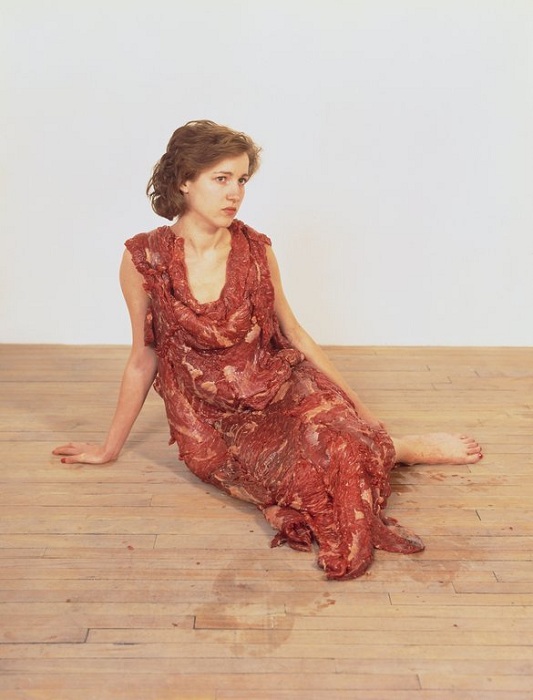Art is one of the most subjective fields in the world: while one person may find a million dollar painting exquisite, another might find it repulsive. Here are some of the most bizarre art works that challenge traditional perceptions of art:
Waiting For Prince Charming
Some art is a performance, an interaction between viewers and the art itself. At the “Sleeping Beauty” exhibit in Ukraine’s National Art Museum, five women took turns sleeping upon white beds, waiting for Prince Charming’s kiss to rouse them. The true beauty and art comes from the tension that surrounds the performance, and the anticipation as to whether or not the sleeping beauty will open her eyes.

While the sleeping beauty performance is interesting on its own, creator Taras Polataiko raised the stakes by having all female participants sign a legal document binding them to marry the man whose kiss will rouse them from their feigned slumber. Outside participants sign a similar agreement and pledge to marry the sleeping beauty who wakes to his kiss.
This interaction presents individuals with a modern interpretation of the classic damsel in distress, as the woman ultimately chooses whether or not she will come back to life.
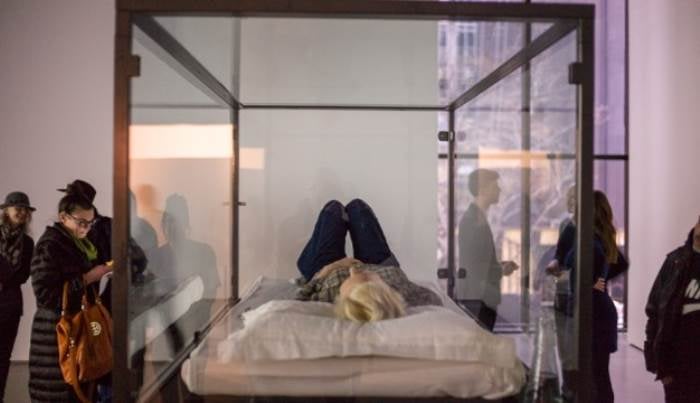
Before the Sleeping Beauty exhibit opened, the Ukrainian Ministry of Culture tried to end the project. The museum has a history of experiencing resistance from the Ukrainian government, though eventually all discrepancies were worked out and Polataiko was given the okay to continue with the exhibit.
After the opening, more controversy followed the exhibit when sleeping beauty participant Yana Gurzhiv opened her eyes to a kiss and found that instead of a princess, she had been roused by a princess. However, Ukraine doesn’t allow gay marriage, so it was impossible for the two women to tie the knot.
The Art Of Non-Art
The urinal below may seem ordinary, even a bit unclean, but it is actually an incredibly famous piece titled “Fountain” by Marcel Duchamp. The urinal, which is signed “R.Mutt” and was created in 1915, is often cited as the zenith of Dadaism.
Dadism began as a reaction to World War I as an art and literary movement that valued irrationality and confusion over logic, nationalism, and reason. Dada artists viewed themselves as non-artists creating non-art (which, in doing so, made their pieces of non-art art). The artistic movement (or non-movement as they might call it) laid the groundwork for abstract art.
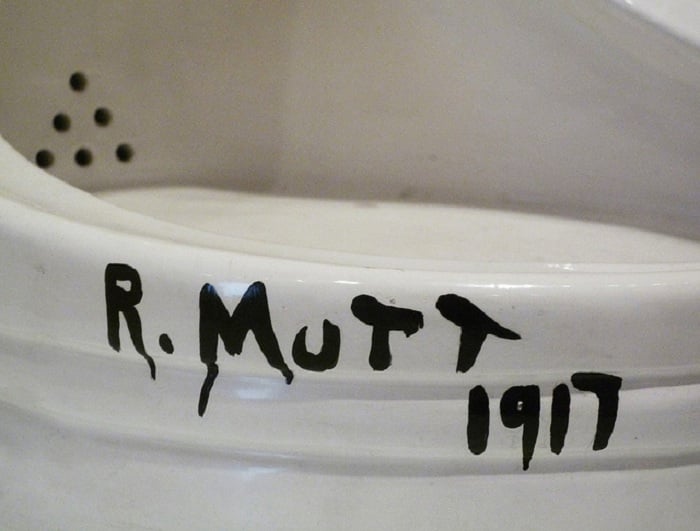
Marcel Duchamp, who was born in France, studied art in Paris with his brothers in the early 1900’s. He had a long career as an artist, and is considered a forefather to other artistic movements such as Surrealism and Conceptualism. He died peacefully in 1968 leaving behind a legacy of art focused on engaging the imagination and the mind.
Duchamp created “Fountain” in 1915 to be shown in an art show featuring avant-garde works. The urinal, which was submitted to the show under the pseudonym R. Mutt, was intended to taunt the avant-garde artists, as it attacked traditional artistic values and guidelines as many Dada artists intended. While many people still maintain that “Fountain” isn’t art, others argue that the action of Duchamp choosing the urinal and classifying it as art makes the piece art.
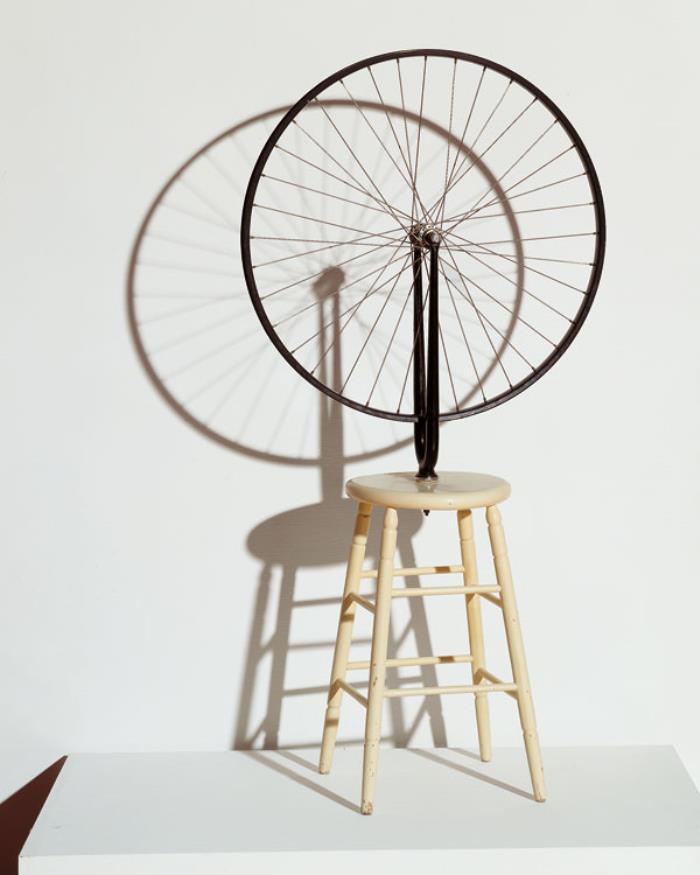
Performance Of A Lifetime
Performance artist Marni Kotak is best known for turning her son’s birth into an artistic performance. In 2011, at the Microscope Gallery, Kotak gave birth to her son in a live show she titled “The Birth of Baby X.” The gallery was transformed into a birthing room for the occasion so that the performance would feel authentic.
Kotak’s other works, which she calls “Found Performances,” are based on personal activities or experiences including staged re-enactments of her own birth, attending her grandfather’s funeral, and losing her virginity in a blue Plymouth. Since Kotak’s son Ajax was born, she’s approached raising him as if it were a work of performance art.
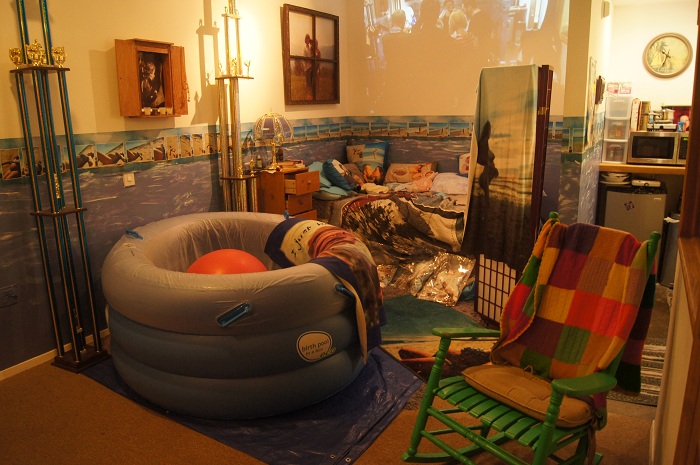
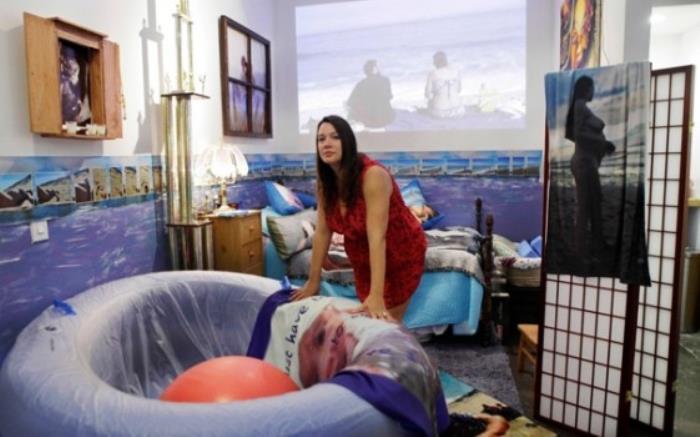
Bizarre Art: Animal Tendencies
Damien Steven Hirst, member of the esteemed Young British Artists that dominated the art scene during the 1990s, is an internationally renowned artist often cited as one of the richest living artists. His earnings are said to be over $300 million, and he is known as a connoisseur of sorts, as he is an artist, art collector, restaurateur, and more.
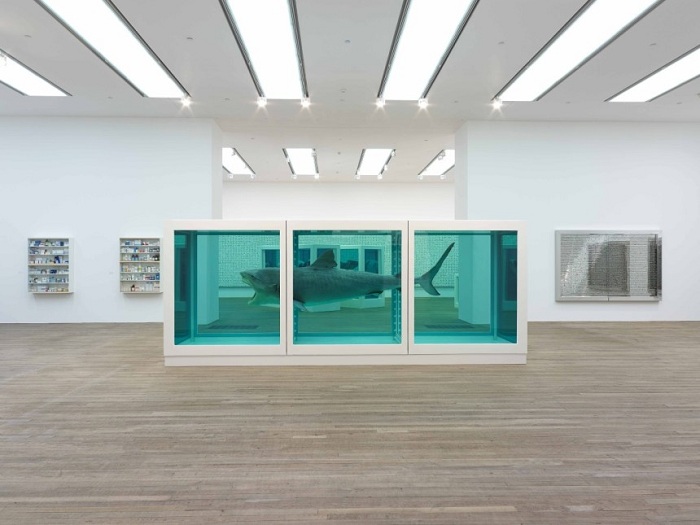
Though Hirst creates a variety of works, including spot paintings and spin paintings, one of his most intriguing exhibits was the “Physical Impossibility of Death in the Mind of Someone Living” in which he preserved a tiger shark in formaldehyde in a vitrine. The work was created in 1991, and the shark specimen was replaced in 2006 due to deterioration of the original.
Hirst created similar exhibits using other preserved animals such as a cow, zebra, and a calf with gold horns and hooves that he titled “The Golden Calf”. Hirst also used thousands of butterflies in his project titled “In and Out of Love”. Sadly, the artist passed away in 2012.
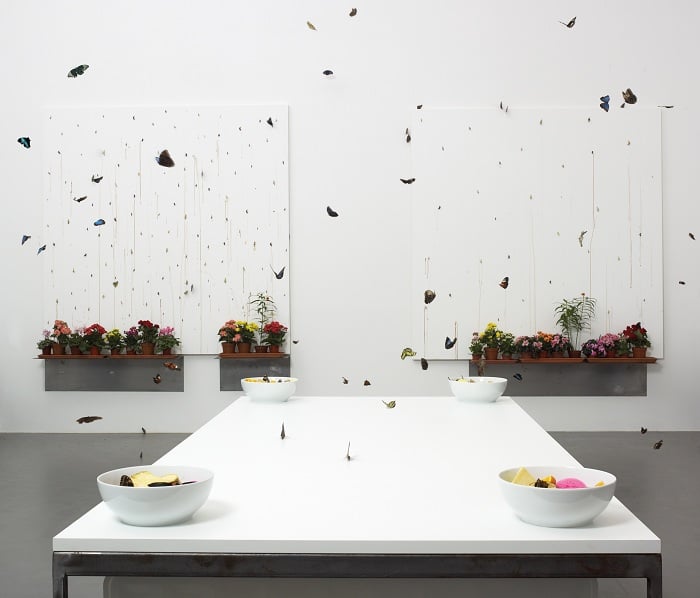
Most Bizarre Art: The Original Meat Dress
If you thought Lady Gaga’s meat dress at the 2010 MTV video awards was innovative, you’ve probably never heard of Jana Sterbak. More than a decade before Gaga’s meaty ensemble, Sterbak, an artist based out of Canada, created clothing from meat in her 1987 exhibit “Vanitas: Flesh Dress for an Albino Anorectic”.

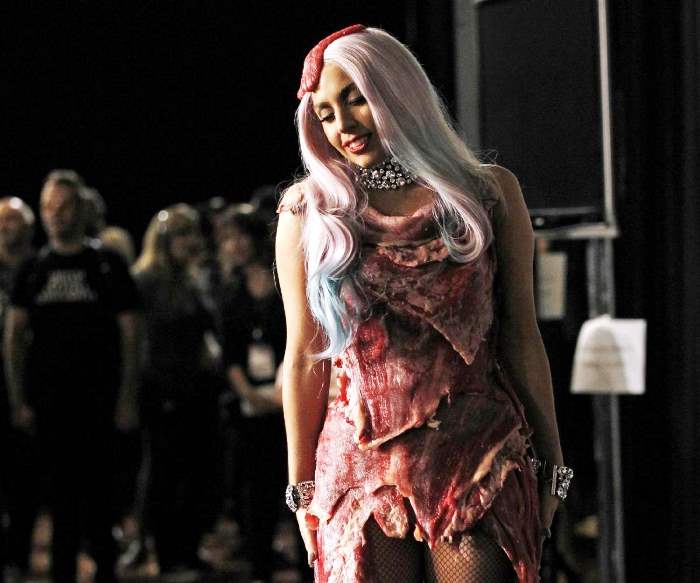
Born in 1955, Jana Sterbak is best known for her dark, ironic, feminist pieces. Her work has Dada and Surrealist inspirations, and much of the meaning in her art comes from the materials she uses to create it. Sterbak chose to describe her meat exhibit with the term “Vanitas,” which was once used to describe seventeenth century still-life compositions of skulls and rotting meat and game.
Check out this video excerpt that details the making of some of these dresses:
“Vanitas” emphasizes the meat’s natural aging process which symbolizes human aging and mortality. Critics have also noted that the work addresses issues concerning women, fashion and the body. Gaga offered a similar critique when she wore her meat dress, toying with culturally accepted notions of women being equated with meat. Sterbak also used meat to create other art, as seen in the meat chair called “Chair Apollinaire” made in 1996.
